
mobile - desktop
 | mobile - desktop |
 |
 Contact Sales! |
|
News & Events:
|
|
Reptile & Amphibian
News Blog Keep up with news and features of interest to the reptile and amphibian community on the kingsnake.com blog. We cover breaking stories from the mainstream and scientific media, user-submitted photos and videos, and feature articles and photos by Jeff Barringer, Richard Bartlett, and other herpetologists and herpetoculturists.
Tuesday, November 30 2010The Dos and Don'ts to Finding Your Local Herp Laws
Over the past decade or more, we as the reptile and exotics keeping community and industry have seen a tremendous increase in the amount of legislation and regulations being proposed, and in many cases, passed pertaining to the ownership of these animals. Such legislation and regulations are, and have been, proposed at all levels of government, ranging from local municipalities, counties and parishes, state/province, and even federally. Oftentimes, when it relates to reptiles, animals such as crocodilians, venomous reptiles. and the large constrictor species are frequently subjected to such regulatory efforts. However, many local municipalities (here in Wisconsin and elsewhere) often have far more restrictive ordinances specifying which animals can and cannot be kept or sold.
Furthermore, most, if not all states and provinces now have their own regulations pertaining to the collection, possession, and sale of their indigenous reptile and amphibian species, particularly those which are threatened, endangered, or otherwise legally protected. Therefore, it is important to know which species are indigenous to your state and which ones are protected by law. It is also important to be aware of, and abide by all other applicable laws and regulations pertaining to keeping reptiles and amphibians, whether you currently reside in a given area and are considering acquiring a particular species which may or may not be legal, or whether you plan to relocate to another municipality, county, and/or state. The Dos of Finding Your Local Herp Laws 1. Join and participate in your local, regional, or state herp society. Oftentimes, other members of many herp societies will be aware of the laws and regulations, and will be able to provide you useful insight and information about them. The individuals you speak with should seem knowledgeable, and be able to either provide you with a copy of the regulations in question, or be able to direct you to them. 2. The Internet is also a valuable and useful tool for conducting nearly any type of research. In most cases, native species regulations can be found through conducting searches on your state's department of natural resources, or fish and game department. Oftentimes, many counties and municipalities will also either have links on their web pages to their code of ordinances (sometimes called the municipal code, or by laws), or the code will be posted directly to their website. Municode.com is a website containing the municipal codes of many counties and municipalities. There is also a law database right here on Kingsnake.com containing links to many local and state laws as well. 3. Many regulations and ordinances are also available at your local library or city/town hall, particularly if you are unable to locate them elsewhere. In most cases, the applicable ordinances relating to keeping reptiles or other exotics will be contained within the animal or pet related ordinances, which may require a little searching to locate if they are not given their own chapter. The Don'ts of Finding Your Local Herp Laws 1. When researching the laws in your area, it is preferable to avoid specifically inquiring about the legality status of reptiles, or other exotic animals to municipality or other local governmental staff. Chances are, many council people will be uninformed and/or fearful of these animals, and doing so will bring the issue to the forefront of their attention and inspire them to draft ordinances against the ownership of these animals (if there are no current ordinances already) in response to what they often perceive to be a "sudden and imminent influx of people keeping deadly exotic animals in the city to protect public safety". If one must make such inquiries to local government, at most ask to see their animal ordinances. 2. Do not necessarily assume that animals you see being sold or displayed in your local pet stores, or at temporary bona fide animal exhibits held in your area are legal to privately keep where you live. Remember that most pet stores serve customers not only in their respective municipalities, but also oftentimes individuals well outside of that municipality, or even region wide. In many instances, local municipalities with restrictions provide exemptions for retail stores, bona fide shows, or other businesses for keeping or selling otherwise prohibited animals provided that several other humane animal care, and sanitation measures are met and maintained. 3. Do not find out the hard way that your area has regulations or restrictions in place, as law enforcement personnel I know would likely say ignorance of the law is no excuse. In most cases, conducting 10 to 20 minutes of research beforehand will save you much of the potential trouble and hassles later on associated with being discovered to have violated laws or ordinances. In conclusion, it should be important for all of us to be aware of and abide by all applicable local and state regulations on keeping our beloved reptiles. While many of us may see many of these ordinances (particularly at the municipality level) as being utterly ridiculous, arbitrary, and making little to no sense biologically, or even outright logically (and thus be tempted to take the "don't ask, don't tell approach"), we must nevertheless either abide by them or choose to reside elsewhere where our animals are permitted. I believe this is especially so if we wish to be seen by the public as a whole as a legitimate, responsible, and law abiding hobby and industry. In nearly each publicized instance where an individual is found to be violating some aspect of reptile related laws (whether pertaining to indigenous or exotic species) or in such cases where someone participates in some other unscrupulous act, it seems that we as the herpetocultural and field herping community as a whole receive yet even more negative publicity, thereby providing even more ammunition for those that oppose our hobby and industry with, and in many cases, are the catalysts for further restrictions or even outright prohibitions. In short, be smart, be aware, and be responsible when it come to laws. Jim Fowler throws down on Sen. Bill Nelson at Florida Expo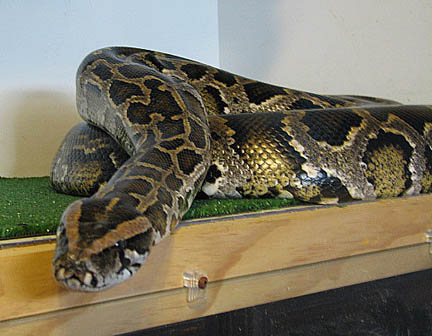 Internationally known zoologist and former "Wild Kingdom" host Jim Fowler, appearing at a wildlife expo in Florida this weekend, blamed media hype and Senator Bill Nelson for the Burmese python problem in Florida. From an interview with a Florida based newspaper group: Internationally known zoologist and former "Wild Kingdom" host Jim Fowler, appearing at a wildlife expo in Florida this weekend, blamed media hype and Senator Bill Nelson for the Burmese python problem in Florida. From an interview with a Florida based newspaper group:"The media is creating a fear of animals," Fowler said, "and animals are really not dangerous to humans...." Jim Fowler began as co-host of Mutual of Omaha's "Wild Kingdom" with legendary zoologist Marlon Perkins before becoming the main host in 1984, winning four Emmys in the process. Now 80, Fowler is still active and is at the expo to introduce animal exhibits and also offer "a new message for the 21st century." To read more about what Jim is saying and doing now, check out the article in The Walton Sun. A moot subject, but the thought intrigues me
I've always been a strange bird, and I like it that way. I like being the one that makes people look at me strange, and thing, wth? I also have a very curious nature, which is one of my fatal flaws. I'm the person that asks all the silly questions that normal people wouldn't even think about.
I know hardly anyone does maternal incubation. But when we bred our ball python, the lovely Wilson, this year, we opted for maternal. We wanted to watch the process. And exciting it was, I can not deny. And a success. She laid a total of five, four were viable. Three hatched, the last died during the hatching process, it was on the bottom and we don't think he was able to get out in time. It was definitely a learning experience. My moot subject...it will sound strange, but do please keep an open mind. Four or so years ago, our two female balls shared a tank. As it turned out, Delilah was not the female we were told and the two bred. Which of course prompted an immediate name change to Del. Never before had we bred, thought of breeding, or knew what a gravid female would look like, so we had no idea until five eggs were laid. There were never two more surprised people, and two people that didn't know what to do. Also, there was a frantic enclosure search. Where on earth was Del? Unless a door is left open, our tanks are escape proof. The pride of my husband, custom built tanks. So he couldn't have escaped. While Wilson sat around her clutch, we searched behind the hide box she'd laid in, under the water bowl, sifted through bedding. Del was no where to be found. Lifting the hide box off of Wilson, my husband started laughing and said, I found Del. I looked and was shocked to see Del was also wrapped around the clutch, with Wilson wrapped around him. His head resting just where you could see him. He was removed and placed in a new enclosure. Because of our own ignorance, we were not successful at hatching the eggs. A valid learning experience though, one that we took to heart. My question is, and yes, it will sound stupid to most (but again, that open mind thing), is I wonder if he would have helped incubate the eggs? Why was he in there? Why would he coil around the eggs like a female? He has no maternal instinct, so why do it at all? Was he just wanting to be in the hide box with her? He had other options, so why use that one? And why actually coil around the eggs? We know so much, yet so little about wild ball pythons. Yes, the chances are extremely slim that males are involved in the incubation process. BUT so many males in the animal kingdom are involved in hatching or raising of young, so why not a snake too? Just one of those things I needed to get out. Wi-Fi hurting trees, says Netherlands study
While not the first, PC World is among the latest to report that Wi-Fi signal radiation has a negative impact on tree health. According to Wageningen University in the Netherlands, Wi-Fi radiation is a definite cause of alterations in tree development, also as bleeding and fissures in the bark. To quote the research, “all deciduous trees in the Western world are affected” by Wi-Fi radiation.
Resource for this article - http://personalmoneystore.com/moneyblog/2010/11/22/wifi-damaging-trees/">Wi-Fi signals are damaging trees, says Netherlands study by Personal Money Store. Blaming one thing other than the bacteria and viruses for issues the Wi-Fi research discovered The five-year Wageningen University Wi-Fi research focused on trees within the Netherlands city of Alphen aan den Rijn. Because of Wi-Fi electromagnetic radiation, 70 percent of urban area trees have symptoms while development and abnormalities were shown in only 10 percent of trees and shrubs when the research for begun. Because of the overall production of radiation from satellite equipment and Wi-Fi on trucks and automobiles with radio along with all the mobile phone networks, the trees were hurt while the ultra-fine particles emitted by Wi-Fi signals were studied by Wageningen also. Scientists remark that the ultra-fine particles are so small that they can easily enter organisms like trees and shrubs. Human beings could be in danger with this. Other plants and animals are a concern too. One would assume that the radiation would have human cells reacting really bad to it. There are not any studies that have been published on this though. Wi-Fi is important, but the price could possibly be deadly The environment needs trees. The USDA Forest Service explains the importance. It seems like now that Wi-Fi is here, nobody would be willing to give up something that is so important to us. If the trees and shrubs all die though, this is what would be gone:
Citations PC World pcworld.com/article/211219/study_says_wifi_makes_trees_sick.html?tk=rss_news Forestry in.gov/dnr/forestry/files/Fo-Top10ReasonsWe_NeedTrees0709.pdf BBC special report on Wi-Fi and cellular radiation youtube.com/watch?v=4QJpbQTb2Uo Monday, November 29 2010More troubles for Sea Turtles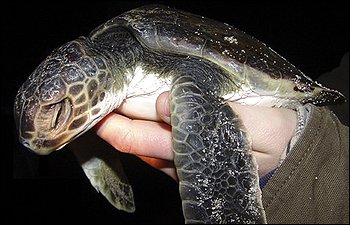 I'm starting to sound like a broken record, but please oh please, can the Sea Turtles catch a break? I'm starting to sound like a broken record, but please oh please, can the Sea Turtles catch a break?First the BP oil spill devasted the turtles. Now they're being rushed to the New England Aquarium suffering from cold waters. From NCEN: The endangered reptiles washed up on the beaches of Wellfleet late Wednesday night. They'd come north to feed on crabs over the summer and got stuck in the chilly waters of Cape Cod Bay. The video is after the bump, but if Santa exists, can he cut the Sea Turtles a break for one year for my gift? Continue reading "More troubles for Sea Turtles" Conservation Roundup: Tuatara takes the prize, and tree frogs find love Our world's amphibians are taking a hit in the wild, but a first time breeding of the La Loma Tree Frog gives hope for at least one species' survival. Our world's amphibians are taking a hit in the wild, but a first time breeding of the La Loma Tree Frog gives hope for at least one species' survival.From Science Daily: "We are some of the first researchers to attempt to breed these animals into captivity and we have very little information about how to care for them," said Brian Gratwicke, international coordinator for the project and a research biologist at the Smithsonian's National Zoo, one of nine project partners. "We were warned that we might not be able to keep these frogs alive, but through a little bit of guesswork, attention to detail and collaboration with other husbandry experts -- we've managed to breed them. The lessons we're learning have put us on target to save this incredible species and our other priority species in Panama." An award was given to the Spinyback Tuatara Trust recently for their education efforts. From The Nelson Mail: The trust's executive officer, Sarah Holman, said the programme allowed people to get up close with two 10-year-old tuataras, and promoted a conservation message mixing science with stories from Ngati Koata, the Kaitiaki, or guardian, of the tuatara. Congrats and thanks to all those who volunteer for conservation. There are more of you out there than most of us realize! Sunday, November 28 2010Our summer with the snakesUntil the past two summers, in eight years of living where we do now, we've only seen two snakes. But that changed the summer before last. We have free range chickens, which should have brought the snakes in years ago, but it didn't. Then the summer of 2009, we started getting visitors. It started with a corn snake, which I don't think I've ever seen in the wild, even though they are of this area. Then it was your traditional black rat snakes. The corn snake was in the back of our field, so we observed him for a bit and let him go on his way. But the rat snakes were more bold. They started investigating my husband's shop, which was also a favorite laying spot for one of my chickens. About ten pm one night we heard her raising cain, and found her fighting off a rat snake trying to get her babies. He was caught and removed. We had another that while he ate the hen's eggs, he was constricting the hen at the same time. It took some doing, but my husband got him to let loose of the hen and she lived to see another day, as well as he did. This summer proved to be most interesting in their activities. We had a total of four rat snakes and a coach whip that were removed from our yard. My mother in law lives next door to us, and called me one afternoon frantic. She'd noticed the chickens were raising cain and when she went to see what all the commotion was about, she found two rat snakes against the back side of her house, trying to preserve the species. Not something she wanted to find. My husband, the snake mumbler as a friend of ours calls him, caught both of them and we relocated them down the road. Love was still in the air, right back at it they went. One was your regular black rat, who'd obviously had a pretty rough life. The tail was missing and scars over the body. I would venture to say it may have survived a run on the highway. The other was a yellow rat snake, which isn't something we see often in the south central part of SC. The local snakes must know my mother in law hates them, because out of the five snakes this year, four we caught along the back side of her house. One was in my husband's shop. And each one is carefully caught, and released elsewhere. They can live in the field, but once they start coming to the house, it gets a bit to close for comfort. And my mother in law starts freaking out. Wonder what he'll catch next year? Mountain Yellow-legged Frogs get a chance at survival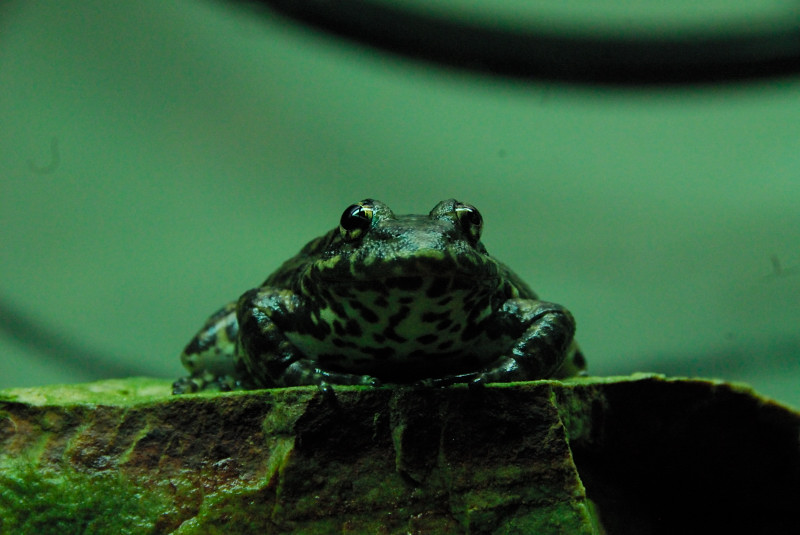 The future of the Mountain Yellow-legged Frogs in California is getting brighter with a second tadpole release. The future of the Mountain Yellow-legged Frogs in California is getting brighter with a second tadpole release.From the Zoo and Aquarium Visitor: The initial reintroduction effort of this species occurred in April 2010 when about 500 eggs were released into the stream in hopes of successful hatching. The tadpoles from that release of eggs are so small that it has been difficult for scientists to determine how many survived. Kingsnake.com paid a visit to the Beckman Center for Conservation Research in September, and Jeff Lemm proudly discussed their work with the Mountain Yellow-legged Frogs, going into great detail about the project as well as concerns relating to the release. Initial reports of survival rates of the initial egg release were amazing, and we at kingsnake.com wish them the same luck on this release. Friday, November 26 2010We need to do our part
At least three times a week, I hear, "You keep snakes?!" Yes, we do. And we aren't ashamed of it. Sometimes, I'm met with animosity, sometimes I get loads of questions. I'm far from an expert, and I answer what I can. It's one topic I never get tired of discussing. I could sit all day and answer the most ridiculous questions. Why? Because I'm educating someone. I'm giving someone knowledge they didn't have before. Am I making a snake fan? Probably not. But will they be more likely to hesitate to kill the next one they find in their yard? Maybe, and it could be just enough time for the little guy to escape.
Most people are taught at a young age that snakes are something to be feared. I was. I remember as a child, watching my parents lift rat snakes (chicken snakes down here) out of our duck's nest and kill them. At the time, I thought it was safer that way. Now I know different. My dad, the biggest anti-snake person you will ever meet, has finally realized that non-venomous snakes don't have to be eliminated, and he'll let them go. The venomous ones are another story, and I won't argue his point. He called me over the summer and said, "Well, you'd be proud, I fished a Coach Whip out of the pool and I didn't kill him. He better not come back though..." When people ask us stupid questions about snakes or anything that is given a bad reputation, we need to answer as honestly and truthfully as possible. Ridicule is only met with more animosity towards the topic. We need to look at it this way, at least they are interested enough to ask, and don't just automatically say, "You're crazy!" and walk away. Answer people's questions, give them all the benefits of snakes, not just keeping as pets, but as our wildlife as well. We should stand proud as reptile owners, not damn ourselves by not discussing our hobby. My dad is the perfect example. He's still terrified of snakes, still hates the fact that we keep them in our house with his grandchild, but because of our talks, a Coach Whip lived to see another day. And that makes it worth all the oxygen I thought I was wasting. Thursday, November 25 2010Hibernation
Most people that try to breed temperate colubrids hibernate (cycle) their animals. I have some kingsnakes I want to breed next year, so I decided to give it a go.
Here's the steps: Decide you'll hibernate them over the holidays to make vacation easier. Good a time as any. Stop feeding the snakes early october. In late October, figure out what can keep temps in the low to mid 50s, and hold lots of plastic bins. I went with a wine cooler. Blanche at the cost of the wine cooler, but buy it anyway. Realize the wine cooler doesn't fit in your car, call a friend with a van from the phone at Home Depot. Get the wine cooler home, drop it on your foot while moving it into your bedroom while wondering how you're going to explain this to your wife. Plug it in, set it at a medium coolness setting, let it run overnight. Realize setting 4 holds it in the mid 50s which seems perfect. Come home from work, get a "look" from wife regarding the new thing taking up space in the bedroom, and the presence of snakes in the bedroom. Clean out some extra tubs you have laying around, and some small water bowls. After tubs are dry, fill with 2-3" of aspen, place water bowl in, an get the snakes in the tubs. I'm chilling them in pairs or trios based on desired breedings. Week 1-3: open door daily to let in fresh air, check on water bowls and animals. Be grateful for drastically reduced cage work. Weeks 4+: Be bored out of your skull with all your babies in hibernation and nothing to do. Think about painting the house, building an outbuilding, or just watching paint dry. Week 12 (still to come: Warm up temps in wine cooler over 3-4 days to the mid sixties. Unplug heat tape on the rack I use, and place them in the tubs at room temp for a day or three, then plug in heat tape on a lower setting. Week 40: Look forward to a short break again Wednesday, November 24 2010Lost amphibs hopefully soon found in India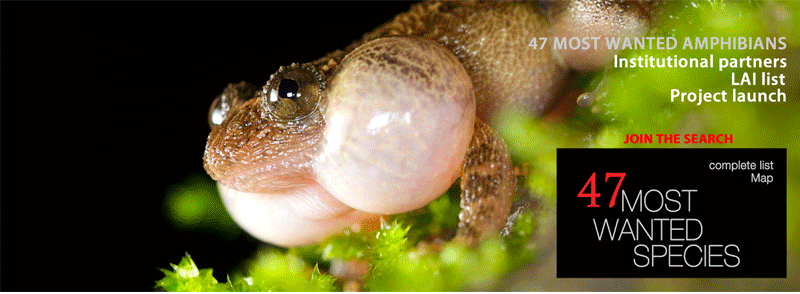 The extinction of amphibians is occurring at such a staggering rate that it's rare and wonderful to see a country set goals to work towards conserving them before it's too late. As reported in a recentpress release, The University of Delhi formed a partnership with Global Wildlife Conservation, the Natural History Museum (London), the IUCN/SSC Amphibian Specialist Group, the Wildlife Conservation Society, and Conservation International to launch a program called "LOST! Amphibians of India." "Now is the time to act and show our support for these species of India before they shift from lost to extinct," said Conservation International's President, Dr. Russell Mittermeier. Often referred to as nature's barometers, amphibians are declining at an amazingly fast pace. To visit the website for the program, click here Tuesday, November 23 2010Tortoise hibernation advice from Tortoise TrustToday, the Tortoise Trust released their revised hibernation guidelines, and the break down by species rocks. The Tortoise Trust, much like our friends over at the Turtle and Tortoise Preservation Group, aims to help establish captive colonies of tortoises in private homes as well as educating the pet owners on proper care. All of the information presented has been carefully prepared by some of the most experienced tortoise keepers in the world in close consultation with leading veterinary surgeons. The techniques described are in daily use at our own tortoise sanctuaries in Britain, the USA, and South Africa, and have been tried and tested over many years. The effectiveness of these techniques is such that despite hibernating possibly more tortoises each year than anyone else, we have never suffered a single hibernation fatality. In each case, the methods used were those described in this booklet. With proper care and attention to detail, you too can achieve similar results. The breakdown is very detailed and also shows some of the issues that may present themselves post waking. To search out your species, click here. Monday, November 22 2010Flying snakes reveal their secrets in new studyScientists have tracked them gliding more than 79 feet in distance in the Asian jungle canopy. In fact, according to study author Jake Socha, a biologist at Virginia Tech, they're not shy about displaying their skills on camera. "They glide; that's what they do," "So they're like, 'I'm outta here, I'm gonna go down there." Socha and the team at Virginia Tech discovered that it's not only the snakes ability to flatten themselves out into an airfoil that gives them the ability to glide for extreme distances, but their undulating body movements also play a great part in extending and directing their flight. To check out the article on Live Science about this amazing flying snake, click here, or check out some of the videos at http://homepage.mac.com/j.socha/video/video.html. Sunday, November 21 2010Cleanliness is next too...
Happiness!
Keeping your herps clean and healthy is key to longevity. After years of rescue and seeing the general LACK of quality care some people afford their animals, I realize you can only turn improve their life so much. The truth is the long term effects of poor sanitation are still unknown. However, preventative care avoids testing this theory. For those concerned with the cost and time of care, keep it cheap and use bleach (cup per gallon of bleach is fine), have extra tubs or containers to store the animals. Think about it, if you have a snake from hatchling to live out its full life say 20 years, you will likely clean the cage some 1,000 times over the life of the animal. Now multiply that time the number of animals you keep. I have been doing this now for roughly 20yrs and I can attest to the efforts needed to maintain herps let along lots of herps. I have found lots of short cuts (as I am sure others have as well). So I am sharing a couple here for reference in hope to improve others efforts in providing quality care: - I love 5gal buckets! For roughly $2.50 each they make great soakers for treating food dishes and bowls. Fill with dirty dishes, add a couple cups of bleach and a squart or Dawn or similar dish soak, and let sit for a day covered. The bleach will works it effects, when you rinse, scrub a little and rinse well. - Plastic tubs rock! But don't stop at just enough to house your herps. Buy extra to swap out when cages are dirty, you can clean the soiled tub later, so don't let you herp sit in the soiled cage any day longer. - Take the time to not only clean your herps cage, but interact with them. Listen, feel smell! Listen for raspy breathing, feel popping in their lungs or gurgling, smell for stanky rot smell (hopefully never!) and look at your herp. Bad sheds, retained eye caps, swollen body parts, extended vents or prolapse? Pay attention to the details. - Remember if hte cage smells, there is a source, remove and sanitize. Get into the rhythm. - Music or TV? Funny as it sounds, I have a stereo system and TV in or around my herp room. Why, to make it fun. Some argue their snakes like Country, Soft Rock and even (my favorite) Heavy Metal! Accountant by trade, herper by choice, Hard Rocker by Soul! Good luck! Wilson's first clutch (maternal incubation)We decided to try our hand at breeding this year. Years ago, two of our snakes bred (they were both females, ha, ha, joke was on us!) and in our inexperience, we let the eggs die. So after lots of research, we decided to try again. Even though we have a male pastel ball python, we decided to put the male that bred Wilson before in with her. Both are normals. Del proved to be just as studly as he was four years ago, and breeding began. They locked up almost immediately, and stayed that way for 24 hours. I jokingly told my husband that some women have all the luck. He was not amused. We let Wilson and Del together for a few days, to see if they would lock again, but once was obviously enough. Del returned to his own enclosure, we waited. We had long ago decided we wanted to be different. Everyone says incubator, incubator! Well, we opted for maternal incubation. Yes, it's hard on the female, and keeps you from being able to breed again that year. We aren't breeders, we had no interest in breeding her again this year. We wanted to see the process, I guess getting as close as we'd ever see to them breeding and incubating in the wild. Though we had an incubator ready for back up in case something went wrong. July 13th, Wilson laid a clutch of 5 eggs directly under her heat lamp, instead of in her hide box like last time. Figuring she knew what was best, we left her to the baking of baby snakes. Ever the smart mother, she had no need to leave the nest to bask and warm up, no shivering to bring up her own body temperature. During the incubation, we had worries. The eggs started to sink in, discolor, and looked nothing like the pictures of viable eggs looked like. But my husband and I reminded ourselves, those are eggs in an incubator, not being hatched by the snake itself. So we left them be. We worried that Wilson would get underweight and become ill. So we watched for signs. In about the fourth week, our first real problem came about. Wilson had come into shed. She left her nest long enough to get some of the skin off her face, but her body was still covered in old skin. It literally looked like it had exploded on her body. So we fretted. Do we pull her off and soak her? Do we leave her and see if she gets it off herself? If we remove her, how combative will she be? After a day of debate, we decided that the eggs weren't worth her getting infections from old skin, so hubby donned a pair of gloves and opened the door. We really expected her to be come aggressive, to protect her clutch, but shockingly she only coiled tighter. He gently removed her from her nest and she allowed him. No aggression, no bites, no need for the gloves. It was as if it was no different than any other time he'd removed her from her tank. Now, I knew these two had a bond, but not like that! We placed her in the soak tank and decided we would check out the eggs. One egg we could tell immediately was a dud. The other four, though they looked rough, showed signs of life. Carefully replacing them how he found them, my husband shut the enclosure door. We gave Wilson her soak time, pulled her out and my husband wiped all the old skin off. We checked her out, making sure that four weeks without a meal wasn't taking a tole on her body. She had lost some weight, of course, but was not unhealthy. So we returned her to her tank. September 18th, my husband comes banging on the bathroom door, "We have babies!" We both rush in, and watch with wonder as we see this tiny head sticking out. It was amazing to watch Wilson, curled around these now white and brown eggs, and a head hardly bigger than my thumb looking around. I guess we spooked it, because it sucked back into the egg. We had to wait about ten minutes before it would come back out. About two hours later, it was finally free of the egg that protected him for all those months. Again worried of her reaction, but knowing she would crust that tiny baby, my husband reached in and removed it from the nest. He passed it to me, and I just stared in absolute wonder. Never before had I held something so tiny and so fragile. And I was helping it get its first look at the world. Out of the four eggs, three hatched. The last egg was developed, but did not make it. We suspect because it was on the bottom of the pile, it was unable to escape the egg. If we'd have realized, we would have helped, but we were learning. Wilson is back to powering down her food, trying to regain the weight she lost while incubating her eggs. She's almost there. Soon she'll return to the finicky eater she was before breeding season, but hopefully not until she's back up to weight. There is discussion of breeding her to our pastel next year, but we will see. Wilson, the other woman in my husband's life
I'd known Wilson for almost four years, and I didn't like her but I tolerated her. And my husband didn't have much interest in her either to my relief. Then out of the blue one day, he wanted to play with her. Wilson, a four year old (at the time) ball python, was owned by my friend Gina. She'd bought the snake from the flea market when it was a neonate. By this time, the snake was about four and a half feet long. My husband asked if he could hold the snake, and sat there for an hour, letting her crawl all over him. She rubbed her face against his goatee, through his hair. He fell in love that day.
A few months later, Gina calls me and says she's moving and can't have the snake and wants to know if I know of anyone that would like to buy it. She was ours that Friday. At the time, Gina told me the snake was a male, and at the time the snake's name wasn't Wilson. The name Wilson came from my husband, naming her after the soccer ball in Cast Away. And a trip to the vet a few months later when she went off feed gave us the discovery that he was a she. We've had Wilson since the middle of 2005. From her, we've learned so much. Snakes are no longer something to be feared, but respected and appreciated for what they do for us in nature. They make excellent pets, they don't bark, you don't have to feed them every day, and couldn't care less if you don't play with them every day. She also started the ball rolling on a fun and interesting hobby. Like tattoos, you can't have just one snake. One became two, then four, then six. And in less than a month, we added four snakes. (Three were Wilson's first clutch, which I will write about later). In the beginning, I was still a bit scared, but with time I learned to relax. I don't go as far as my husband and let her get in my face, but she and I respect that we are the other woman in his life. After almost six years of keeping and adding new snakes, Wilson is still my husband's favorite. They still sit on the couch together, her crawling through his hair as she drapes across his shoulders. To add, my friend Gina, who created my husband's love of snakes which then created mine, was killed in May. I think of Gina every time I look at Wilson, and I'm thankful I have a wonderful reminder of a very dear friend. I hate that I never had the chance to tell Gina about Wilson and her eggs, as she laid about a month after Gina's death. I know she would have loved the thought! Saturday, November 20 2010New Madison Area Herp Society
Since this is my first blog entry here on KS, I figure I would test it out by helping to promote the newly re-vitalized Madison Area Herpetological Society (MAHS), as well as herp societies in general.
According to MAHS, A herpetological society educates enthusiasts and the general public about frequently misunderstood animals. It is a great source for people to exchange knowledge, from amateur hobbyists to experts. It also gives a community a basis for expertise on issues dealing with local laws, ordinances, and conservation. Meetings include: -Guest speakers -Raffles -Monthly Discussion Topics Possible Other Resources: -Library -Forum Community: -Educational Presentations -Booths at Events MAHS's idea of rotating their meetings around the city each month (and always at those same locations each time) is a unique idea that should be implemented by other herp societies in large metropolitan areas. It is always a plus when any organization actually spends the time to seek and listen to input from both their current and prospective members. MAHS currently meets every other month at AniMart on the east side, and at Barns and Noble Bookstore every other month on the west side. A north side meeting location has yet to be determined. I encourage anyone with an interest in reptiles and amphibians in or around the Madison Wisconsin area, or even anywhere in Wisconsin to join and participate in this great group or any of the other great herp societies Wisconsin has to offer such as the Eastern WI Herp Society, Fox Valley Area Herp Club, NE WI Herp Association, or the student based UW Stevens Point Herp Society. If you reside in states other than Wisconsin, chances are many larger municipalities or regions have their own herp societies to join. You do not need to be a professional breeder with thousands of high end snakes, or know the scientific names of every frog or salamander in North America to join a herp society. All you need is a passion for herps and a willingness to learn, meet new people, and have fun doing social activities with like minded people. After all, a herp society should be for everyone in the reptile community. For more information about the MAHS or if interested in joining, contact: Jim Stelpflug- swreptile@aol.com Ryan McVeigh- ryan@madcityreptiles.com Dinosaurs just got venom: Komodo dragon linked to African fossilsCanadian biologists Alison Murray and Rob Holmes found the vertebrae of these two animals is the key connecting them together. From Physorg.org: Holmes says the telltale African vertebrae fossils belonged to a lizard that was about a metre- and-a-half long whose ability to swim may be key to figuring out how more than 30 million years later its ancestors turned up on the other side of the world. After the bump you will find the actual abstract for the paper, published in Palaeontology: Continue reading "Dinosaurs just got venom: Komodo dragon linked to African fossils" Friday, November 19 2010CT scan tracks snake digestion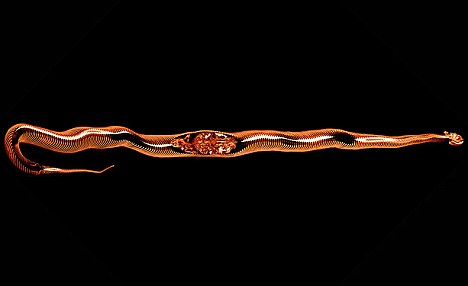 It's an older story, but worth reading: An amazing CT scan tracks the progress of a python's digestion and leaves me saying "COOL!" I know the beginning and the ending of the process first hand, but the really fun part is the middle, complete with pictures! It's an older story, but worth reading: An amazing CT scan tracks the progress of a python's digestion and leaves me saying "COOL!" I know the beginning and the ending of the process first hand, but the really fun part is the middle, complete with pictures!From the DailyMail: Scientists were able to carry out a computer tomography or CT scan and used magnetic resonance imaging (MRI) to study the 5kg snake. The folks over at Science Giest had the same reaction I did. Geeks of a feather? After the bump, the BBC video of the CT scan. Further geeking abounds! Continue reading "CT scan tracks snake digestion" Wednesday, November 17 2010Conservation Roundup: Marine Iguana smuggling attempt foiled; Gila Monster Protection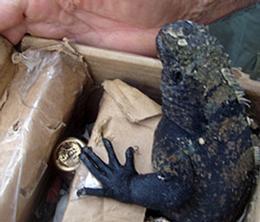 The smuggling of an animal as precious as a Marine Iguana is about the stupidest thing possible, but hey, some people will try anything for a buck -- even taking animals that live solely on the food in their habitat. The smuggling of an animal as precious as a Marine Iguana is about the stupidest thing possible, but hey, some people will try anything for a buck -- even taking animals that live solely on the food in their habitat.From Wildlife Extra News: An attempt to illegally export marine iguanas, an emblematic species of the Galapagos, has been stopped by the Ecuadorian Environmental Police's dog unit. The box was abandoned and the iguanas at least will hopefully return to the wild. The dogs are trained to sniff out wildlife and recently found a house with shark fins, also protected, on Santa Cruz Island. In late October a group in Utah sued the U.S. Fish and Wildlife for failure to protect their native Gila Monsters. From Desert News.com: The suit filed in U.S. District Court in Colorado says stresses on the Utah population, which occur only in Washington County, include declines in habitat because of increasing urbanization, illicit trade and poaching, as well persecution by humans. It is felt that this northernmost range of the Gila and the survival of the group are critical for the species overall population. Tuesday, November 16 2010UPDATE: Preserving Southern California's Chatsworth Reservoir Even though the cut-off date for public comments about preserving the Chatsworth Reservoir was November 15, the office is still accepting correspondence. Apparently, some facets of the community were not informed in a timely manner about the public comment period. In fact, the Southwestern Herpetologists Society (SWHS) only learned about this plan less than two weeks ago. Even though the cut-off date for public comments about preserving the Chatsworth Reservoir was November 15, the office is still accepting correspondence. Apparently, some facets of the community were not informed in a timely manner about the public comment period. In fact, the Southwestern Herpetologists Society (SWHS) only learned about this plan less than two weeks ago.So, keep the correspondence flowing. The posting information and phone number, along with the sample letter can be found in the here. I had the opportunity to see the land in question for myself; thanks to SWHS's Rande Gallant and Jarrod Lucas for the summary information about the reservoir and also what it means to SWHS and the community! It saddens me to think that this last area of the San Fernando Valley's untouched wetlands has the potential to be flattened and "restored". We all know that it's never quite the same after that, especially for the indigenous plants and animal life! I haven't had the chance to review and process all my photos yet, but SWHS's Diana Sprout has graciously provided some photos to give you an insight to the animal life there -- you can see them under the jump. Continue reading "UPDATE: Preserving Southern California's Chatsworth Reservoir" Show Report: SEWERFest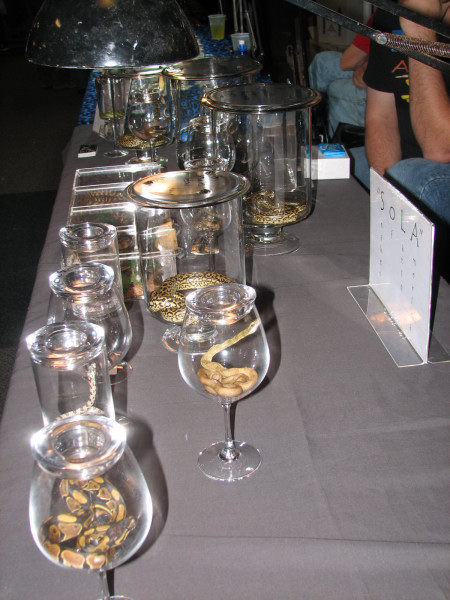 SEWERFest, one of the major shows in Wisconsin, could use a name change, but it does hold true to the promise of "captive-bred only." SEWERFest, one of the major shows in Wisconsin, could use a name change, but it does hold true to the promise of "captive-bred only." "SEWER" actually stands for "South East Wisconsin Exotic Reptile," and it is one of the two major reptile shows here in Wisconsin. The organizers are pretty strict about the captive bred rule, and it offers a nice alternative. I had to share Gavin's table from SoLA for best in show. Gavin really tends to put a bit of effort in presentation and while I tend to give him a really hard time, it's nice to see someone put effort into presentation. I, on the other hand, was far less inspired. Unlike most vendors here, I am just displaying a variety of reptiles available for adoption, with no placements today. I spent my time chatting about what make good pets, promoting good breeders of species we do not currently have, discussing the pending reptile laws. All in a days work, and thankfully the organizers offer free table space to rescues, herp societies and other non-profit groups. This is also one of the rare shows I actually work from this side of the table. I usually am working for kingsnake, but today I am doing a bit of personal promotion. Each show, the organizers also donate a portion of the door. Aaron LaForge, one of the promoters, just lost his father-in-law to lung cancer, so today they stepped outside the reptile realm and chose the Lung Cancer Research Fund. After the bump are a few shots from the show, I didn't place anything but I had several folks interested in my cal king as well as my blue tongue skink. Cross those fingers I have placement by thanksgiving! To see the full gallery, click here. Continue reading "Show Report: SEWERFest" Saturday, November 13 2010The public's assistance requested: Preserving Southern California's Chatsworth ReservoirA land transaction is being proposed with the intent of wetlands restoration; however, the underlying impacts of allowing public access and potential lack of suitable maintenance, may in the end jeopardize the area's local animal and plant life and compromise its natural state. For details: Document No. NG-10-375-RP Chatsworth Reservoir Wetlands and Ripiarian Mitigation Program The deadline to comment is November 15, 2010, at 3 pm. David Attaway Environmental Supervisor City of Los Angeles Department of Recreation and Parks 221, N. Figueroa Street, Suite 100 Los Angeles, CA 90012. A letter can be faxed to him at (213) 202-2611 followed with mailing of the original letter. For additional information: 213-202-2660. After the bump is a request for help from SWHS board member Rande Gallant with a sample letter. Continue reading "The public's assistance requested: Preserving Southern California's Chatsworth Reservoir" Third species of Taipan discovered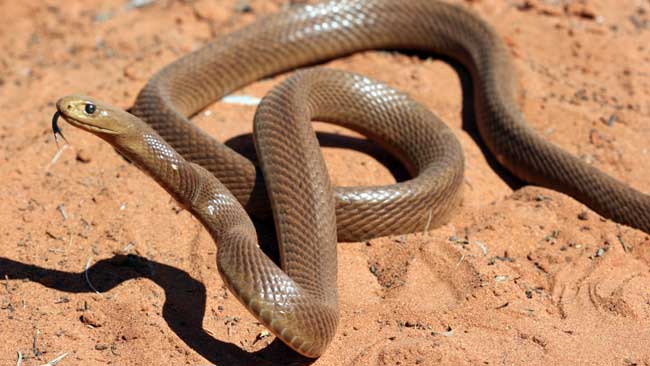 Taipans rank up there as some of the most deadly snakes and now a third species has been recently discovered. Taipans rank up there as some of the most deadly snakes and now a third species has been recently discovered. During a recent biological survey, two more of these rare Taipans have been located bringing the count worldwide to a grand total of 5 animals. From PerthNow: The two western desert taipans (Oxyuranus temporalis) were found as part of a survey in October by the WA Department of Environment and Conservation (DEC) and the Spinifex People, in partnership with the WA Museum, the Adelaide Zoo, and Museum Victoria. With the numerous reports each year of taipans in urban locations, this research may be life saving for many. To read the full article, click here. Thursday, November 11 2010Coral Snake anti-venom back in production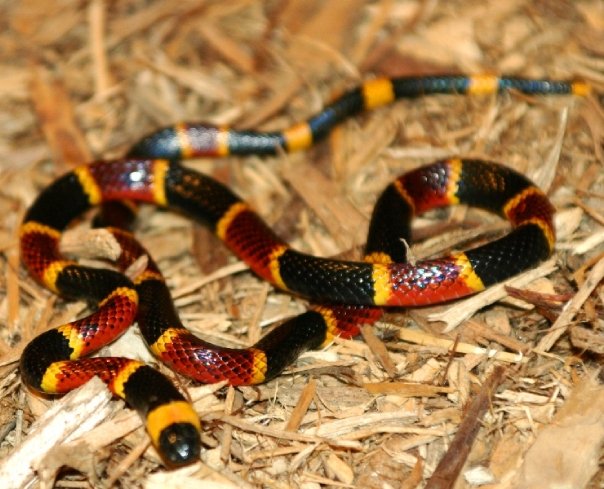 As the supply of Coral Snake anti-venom dwindles down to nothing and the expiration date approaches, Pfizer announces that it has broken ground a facility to start production again. As the supply of Coral Snake anti-venom dwindles down to nothing and the expiration date approaches, Pfizer announces that it has broken ground a facility to start production again.From Mlive.com: The initial production of antivenin (the clinical term for anti-venom) for treating coral snake bites is the function of an 11,500-square-foot facility Pfizer is building near the center of the 2,100-acre animal health research farm it has in Richland Township. The facility is being built at a cost of $3.75 million. This move will also create a few additional jobs at their new facilities. photo credit, Eric Marquette Wednesday, November 10 2010Snake Day 2010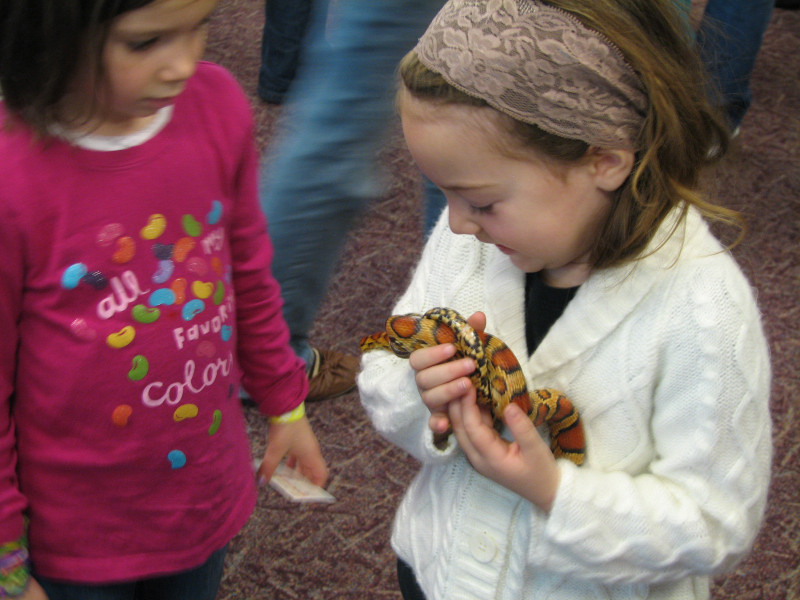 Every year for the past 10 years I have loaded up animals on a very cold day and taken a short trip to my museum. Run by Bob Henderson and hosted by the Milwaukee Public Museum, Snake Day is basically a free for all educational event. We have had some people over the years who were not thrilled with the animals in the show, but this year, folks were not only interested and intrigued but shared a genuine love for reptiles. I did have a few discussions about those lovely "animals will kill you" shows, but people seemed very receptive to the fact that those are rare instances used to make the rest of the community look crazy. One thing repeatedly pointed out to me by attendees was the fact that reptile keepers come from all walks of life. This is something I have been going on and on about for years. Every year for the past 10 years I have loaded up animals on a very cold day and taken a short trip to my museum. Run by Bob Henderson and hosted by the Milwaukee Public Museum, Snake Day is basically a free for all educational event. We have had some people over the years who were not thrilled with the animals in the show, but this year, folks were not only interested and intrigued but shared a genuine love for reptiles. I did have a few discussions about those lovely "animals will kill you" shows, but people seemed very receptive to the fact that those are rare instances used to make the rest of the community look crazy. One thing repeatedly pointed out to me by attendees was the fact that reptile keepers come from all walks of life. This is something I have been going on and on about for years.Our group included everything. Zoo professionals Rob Carmichael and his crew from Wildlife Discovery were on hand, as were breeders, keepers, educators, conservationists and rescuers; we were all there. We share all walks of life in the real world. We spanned all ages from Anna (6 years old) with her corn snakes and Harmony (7 years old) with her scorpion, all the way to Nancy and Mike who are both well into their 60s. Some have tattoos and some don't, some listen to classical and some listen to heavy metal. We work in every profession imaginable. But we share one thing, and that is our love for the cold-blooded. Our displays ranged from the tiniest amphibians to native Wisconsin species of colubrids to cobras and vipers, rare iguanas and the giants of the reptile world. We talked good pets and bad pets. Kids of all ages got their first chance to hold a snake or touch a lizard. And even more amazing is people learn about the reptiles in their own back yard. I have a few photos after the bump, but most of all, I just wanted to share that it is important to put your money where your mouth is. Public outreach right now is so very important to our community. If you are doing things like this, let us know here on our blog. Continue reading "Snake Day 2010" U.S. Fish and Wildlife Service announces candidates for Endangered Species Act The U.S. Fish and Wildlife Service has announced its annual Candidate Notice of Review, a yearly appraisal of the current status of plants and animals considered candidates for protection under the Endangered Species Act. The U.S. Fish and Wildlife Service has announced its annual Candidate Notice of Review, a yearly appraisal of the current status of plants and animals considered candidates for protection under the Endangered Species Act. A number of reptiles and amphibians remain candidates, including the Eastern Massasauga Rattlesnake, but none were added or removed this year. Being listed as a candidate species is the first step towards an "endangered" listing, but many plants and animals have languished on the list for years in a form of bureaucratic limbo (many already enjoy protection under state laws and regulations). As of yesterday's announcement, there are now 249 species recognized by the USFWS as candidates for ESA protection. The two different spins on this are interesting. This is how the government put it: The U.S. Fish and Wildlife Service today released its Candidate Notice of Review, a yearly appraisal of the current status of plants and animals that are considered candidates for protection under the Endangered Species Act (ESA). Four species have been removed from candidate status, five have been added, and eight have a change in priority from the last review in December 2008. There are now 249 species recognized by the Service as candidates for ESA protection. And this is how it is being portrayed by the Center for Biological Diversity: The Obama administration today denied Endangered Species Act protection to 251 plants and animals that government scientists have said need these protections to avoid extinction. Instead, the administration has placed them indefinitely on a list of “candidate” species, where many have already languished for years without help. Tuesday, November 9 2010Texas proposes new salmonellosis rules  The Texas Department of State Health Services has proposed a rule change requiring retailers selling live reptiles and amphibians to post new signs and make handouts available regarding the transmission and prevention of reptile and amphibian salmonellosis. These changes would reflect the current recommendations by the Centers for Disease Control (CDC), and clarify existing language. Salmonellosis has long been a concern of herpetoculturists, and this effort represents an attempt to present a single consistent message in line with the CDC recommendations. Texans have until November 21 to submit comments on the proposed rule change, which was published in the October 22 Texas Register. The proposed changes appear on the Texas Register web site; an overview of the changes appears below the jump. Comments should be sent to Tom Sidwa, DVM, Department of State Health Services, Community Preparedness Section, Zoonosis Control Branch, Mail Code 1956, P.O. Box 149347, Austin, TX 78714-9347 or via email to Tom.Sidwa@dshs.state.tx.us. Continue reading "Texas proposes new salmonellosis rules" Sunday, November 7 2010Guest chat tonight: Russ Gurley on the TTPG Conference
Russ Gurley will be joining us tonight at 9 pm EST to discuss the upcoming Turtle and Tortoise Preservation Group's conference, which will be held this week in Mesa, Ariz. The event will be held in the Reptile and Amphibian chat room.
If you have questions for Russ, drop a line here in the comments or email me at phfaust@pethobbyist.com. Winter preparations for your herp collection
Winter is coming and for the people in certain states, its already here. When winter arrives, its time to prepare for changes in the home environment to help avoid health problems with our herps. Winter is notoriously dry as forced-air heat dries out the already dry winter air. Some homes experiencing single digit humidity that saps the humidity out of everything from your wood floors to your tropical herps cage. This is a critical time of year when cold drafts and low humity work to make your animals suffer respiratory distress leading to infection and illness. So what do you do to prevent this? Isolate your herps to a room that you can control the humidty with a good humidifier. Change the filter in the humidifier using the manufacturers instructions to avoid bacteria build up. If you cannot do that, then increase the water bowl and spray the cage periodically (daily mostly). There are great misting and fogging systems for smaller cages. Avoid soggy cages that can also lead to mold and fungus.
Also, drafts happen in our older homes dropping temps in the house below level too low for the cage heaters to keep up with. Don't just rely on your remote thermometers. Use infrared thermometers to scan the various temp ranges of your enclosures. Be aware that cages close to walls, windows and concrete floors can be 10-20 degrees lower than other cages connected to a cetnral thermostat. Increasing basking lights helps increase day time temps or using a larger under tank heater. Incandescent lighting will reduce the humidity so you need to compensate. Also during this time as with our holiday decorations and scented candles, be wary of fire hazards! Don't overload your circuits and use properly rated powerstrips and avoid the electrical octopus. Watch out for extension cords that are hot to the touch as they are being overloaded. This is critical when you are dealing with space heaters which draw lots of current. If you use an oil heater, make sure you get one that has tip over protection. Keep it safe for you and your herps. Remember that signs of illness are subtle so keep a close eye on your herps during this time. Good luck!
« previous page
(Page 2 of 2, totaling 36 entries)
|
Our SponsorsArchivesCategoriesSubscribe |
|
AprilFirstBioEngineering | GunHobbyist.com | GunShowGuide.com | GunShows.mobi | GunBusinessGuide.com | club kingsnake | live stage magazine
| ||||||||




